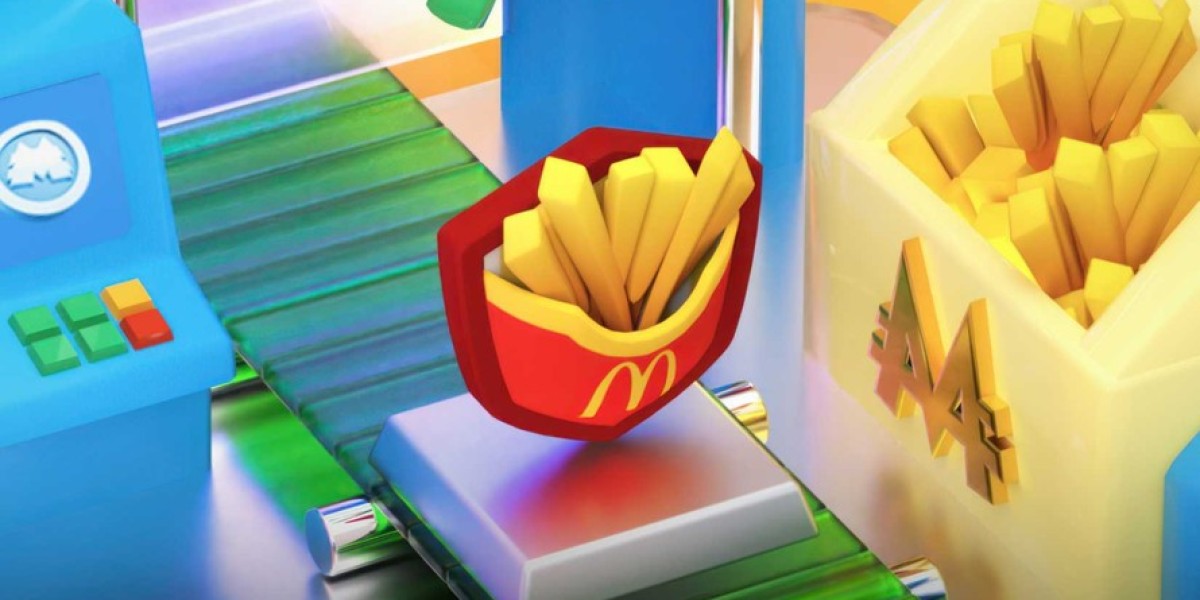DIANABOL Third Degree Pharma Co
**Doping (doping in sport)** – The deliberate use of performance‑enhancing substances or methods that are prohibited by the World Anti‑Doping Agency (WADA) and many national federations, aimed at giving an athlete an unfair advantage over competitors.
---
## 1. What is considered "doping"?
| Category | Examples | Typical Effect |
|----------|----------|----------------|
| **Anabolic agents** | Anabolic steroids (e.g., testosterone, nandrolone), Selective androgen receptor modulators (SARMs) | ↑ muscle mass & strength |
| **Stimulants** | Amphetamines, Cocaine, Ephedrine | ↑ alertness, ↓ fatigue |
| **Hormones/Peptides** | Erythropoietin (EPO), Human growth hormone (hGH) | ↑ red‑cell count or tissue repair |
| **Beta‑2 agonists** | Salbutamol, Clenbuterol | ↑ muscle mass & reduced fat |
| **Diuretics / masking agents** | Furosemide, Acetazolamide | mask presence of other drugs |
| **Other compounds** | Modafinil, Yohimbine | wakefulness, appetite suppression |
> *All listed substances are controlled under the U.S. Controlled Substances Act and international conventions.*
---
### 2. How Drugs Are Detected in Blood
| **Analytical Strategy** | **Principle** | **Typical Sample Volume** | **Key Strengths / Limitations** |
|-------------------------|---------------|--------------------------|---------------------------------|
| **Immunoassays (ELISA, CLIA)** | Antibody‑antigen binding; fluorescence or colorimetric readout | 0.5–2 mL | Fast, high throughput; limited specificity → false positives/negatives |
| **Gas Chromatography – Mass Spectrometry (GC‑MS)** | Volatile analytes derivatized; separated by GC, detected by MS | 1–3 mL | Gold standard for small molecules; requires derivatization; longer prep |
| **Liquid Chromatography – Tandem MS (LC‑MS/MS)** | Polar/thermolabile compounds directly analyzed; high sensitivity & specificity | 0.5–2 mL | Preferred for complex matrices; fast; can multiplex many analytes |
| **High‑Resolution Mass Spectrometry (HRMS)** | Accurate mass measurement; untargeted screening | 1–3 mL | Useful for unknowns, forensic investigations |
---
## Practical Workflow for a Clinical Lab
| Step | Action | Key Considerations |
|------|--------|--------------------|
| **Sample collection** | Venous blood into SST or EDTA tubes | Follow phlebotomy guidelines; avoid hemolysis |
| **Processing** | Centrifuge 10–12 min @ 1500 ×g, chill if needed | Use calibrated centrifuge; store plasma/serum at –80 °C until analysis |
| **Aliquoting** | 200 µL into cryovials (≤5 mL each) | Label with patient ID, date/time, https://oportunidades.talento-humano.co aliquot number |
| **Storage** | -20 °C for short‑term (≤2 weeks)
–80 °C for long‑term (≥1 month) | Verify freezer temperature logs; avoid freeze–thaw cycles |
| **Documentation** | Maintain a digital or paper log: vial ID, volume, storage location, expiration date | Update upon retrieval or disposal |
---
## 2. Practical Workflow & Tips
| Step | What to Do | Why It Matters | Quick Tip |
|------|------------|----------------|-----------|
| **Receive samples** | Verify accession numbers and labels against patient records. | Prevent mix‑ups early. | Use barcode scanners if available. |
| **Aliquoting** | Use low‑binding tubes, 0.5–1 mL aliquots for long‑term storage; keep at least two separate aliquots per sample. | Reduces freeze‑thaw cycles and contamination risk. | Label tubes with date & aliquot number. |
| **Freezing rate** | Use a controlled‑rate freezer or dry ice to reach –80 °C quickly (≈1–2 °C/min). | Protects nucleic acids from degradation. | Store samples in racks that allow freezers to circulate air evenly. |
| **Inventory management** | Maintain an electronic database with sample ID, source, volume, storage location & last access date. | Facilitates quick retrieval and audit trails. | Use barcodes for scanning at each handling step. |
| **Safety & compliance** | Follow institutional biosafety regulations; use PPE; dispose of waste properly. | Prevents contamination and legal issues. | Train personnel on SOP updates annually. |
---
## 3. Detailed Workflow
Below is a step‑by‑step guide, including decision points and key parameters. The workflow assumes you have already collected the samples (e.g., blood, buccal swabs) under sterile conditions.
### 3.1 Sample Reception & Logging
| Step | Action | Tool / Parameter |
|------|--------|-----------------|
| 1 | Receive sample container(s). Verify label integrity. | Label scanner or manual check. |
| 2 | Log into sample tracking system (e.g., LIMS). Record accession number, collection date/time, patient ID, and any relevant clinical notes. | LIMS software; barcode scanner. |
### 3.2 Storage Prior to Extraction
| Step | Action | Tool / Parameter |
|------|--------|-----------------|
| 3 | If immediate extraction is not possible, store at -80 °C (preferred) or 4 °C for up to 48 h. | Freezer; temperature log. |
| 4 | Ensure samples are stored in sealed tubes with minimal headspace to prevent degradation. | Cryogenic vials; sealing device. |
### 3.3 Extraction of Genomic DNA
| Step | Action | Tool / Parameter |
|------|--------|-----------------|
| 5 | Thaw sample on ice. | Ice bucket. |
| 6 | Use a validated kit (e.g., Qiagen DNeasy Blood & Tissue) following manufacturer’s protocol, including optional RNase A treatment to eliminate RNA contamination. | Extraction kits; pipettes; tubes. |
| 7 | Measure DNA concentration and purity using spectrophotometer (A260/A280 ratio ~1.8). | Nanodrop or equivalent. |
### 3.4 PCR Amplification of *msp2* Gene
#### Primers
- **Forward Primer**: `5'-GTTGTACAAAGCGTATCTTC-3'` (targets conserved region upstream of *msp2*).
- **Reverse Primer**: `5'-CAGCCAAATTGTTTAATGGG-3'` (targets conserved region downstream of *msp2*).
#### PCR Mix (25 µL)
| Component | Volume |
|-----------|--------|
| 10× PCR Buffer (Mg²⁺) | 2.5 μL |
| dNTP Mix (10 mM each) | 0.5 μL |
| Forward Primer (10 µM) | 1.25 μL |
| Reverse Primer (10 µM) | 1.25 μL |
| DNA Polymerase (e.g., Taq, 5 U/µL) | 0.5 μL |
| Template DNA (~100 ng) | Variable (up to 2 μL) |
| Nuclease-free Water | To 50 μL |
**Thermal Cycling Conditions**
1. **Initial Denaturation**: 95°C for 3 minutes.
2. **30 Cycles of:**
- Denaturation at 95°C for 30 seconds.
- Annealing at 55-60°C (optimize based on primer Tm) for 30 seconds.
- Extension at 72°C for 1 minute per kb.
3. **Final Extension**: 72°C for 10 minutes.
**Post-PCR Processing**
- Run a fraction (~5 μL) of the PCR product on a 2% agarose gel with ethidium bromide to confirm amplicon size and purity.
- Purify the entire PCR reaction using a commercial PCR purification kit (e.g., QIAquick PCR Purification Kit). This step removes primers, nucleotides, enzymes, and salts that may interfere with sequencing.
#### 1.3 Preparation of Sequencing Reaction
**Choice of Primer**
- The sequencing primer should anneal to the PCR product at a location upstream of the region of interest but not overlap the fluorescent dye-labeled terminator used in Sanger sequencing.
- Typically, the same primer used for PCR amplification can serve as the sequencing primer if it meets these criteria. However, if the PCR amplicon is long or contains regions that interfere with efficient sequencing, a nested primer may be employed.
**Reaction Mix (Per Sample)**
| Component | Concentration / Volume | Purpose |
|-----------|------------------------|---------|
| 10× BigDye Terminator Sequencing Buffer | 2.5 µL | Provides optimal ionic strength and pH for dye terminators |
| dNTP mix (BigDye) | 1 µL | Supplies nucleotides labeled with fluorescent dye terminators |
| Primer (10 pmol/µL) | 0.8–1 µL | Sequence-specific primer to initiate DNA synthesis |
| Template DNA | up to 20 ng (adjusted in 2× PCR buffer) | Target DNA for sequencing |
| 5× PCR Buffer (20 mM Tris-HCl, 10 mM KCl, pH 8.3) | 4–6 µL | Provides optimal ionic environment and pH for polymerase activity |
| MgCl₂ (25 mM) | 1–2 µL | Cofactor required by DNA polymerase |
| dNTPs (10 mM each) | 2.5–3 µL | Substrates for DNA synthesis |
| Taq DNA Polymerase (5 U/mL) | 0.5–1 µL | Enzyme that extends primers in the presence of Mg²⁺ and dNTPs |
The total reaction volume typically ranges from 25 to 50 µL, allowing for flexibility in scaling up or down based on experimental needs.
---
## 2. Critical Variables Affecting the Reaction
### 2.1 Buffer Composition (Tris–HCl, pH)
- **Impact**: Tris–HCl maintains a stable pH (~7.6–8.0). Deviations can alter enzyme activity and primer annealing temperatures.
- **What if**: At low pH (<7.0), Mg²⁺ may precipitate as hydroxides, reducing its availability; at high pH (>8.5), Tris deprotonates, potentially affecting ionic strength.
### 2.2 Magnesium Ion Concentration (MgCl₂)
- **Impact**: Mg²⁺ is essential for polymerase catalytic activity and stabilizes the DNA duplex. Too low → poor extension; too high → nonspecific binding.
- **What if**: 1–1.5 mM yields efficient PCR in most cases; >2.5 mM may increase mispriming, leading to artifacts.
### 2.3 Deoxynucleotide Triphosphate (dNTP) Levels
- **Impact**: Adequate dNTPs are required for chain elongation. Imbalance can bias incorporation and reduce fidelity.
- **What if**: Standard concentration ~200 µM per nucleotide; excess may inhibit polymerase, while deficiency slows extension.
### 2.4 Primer Concentration
- **Impact**: Optimal primer levels (e.g., 0.5–1 µM) ensure efficient binding without excessive dimerization.
- **What if**: Too high leads to nonspecific amplification; too low yields poor product yield.
---
## 3. Troubleshooting Scenarios and Experimental Design
### Scenario A: Unexpected Amplification Failure
- **Symptom:** No visible PCR product on agarose gel despite correct reaction setup.
- **Possible Causes:**
- Primer design flaws (secondary structures, mismatches).
- DNA template degradation or low concentration.
- Incorrect annealing temperature leading to primer misbinding.
- **Experimental Steps:**
1. Verify primer sequences against target region using alignment tools; check for hairpins or dimers via software (e.g., OligoAnalyzer).
2. Perform a gradient PCR varying annealing temperatures to identify optimal conditions.
3. Quantify template DNA with spectrophotometry and ensure adequate concentration.
---
## 4. Troubleshooting Guide
| **Issue** | **Potential Causes** | **Suggested Remedies** |
|-----------|----------------------|------------------------|
| **No amplification (no bands)** | - Primer mismatch
- Low annealing temperature
- Poor DNA quality | - Redesign primers or adjust annealing temperature.
- Verify template integrity. |
| **Non-specific bands** | - High primer concentration
- Low annealing temperature
- Template complexity | - Reduce primer concentration, increase annealing temperature, use touchdown PCR. |
| **Multiple faint bands** | - Primer dimer formation
- Secondary structures in template | - Optimize Mg²⁺ concentration; add DMSO or betaine. |
| **Smearing** | - DNA degradation
- Overexposure on gel | - Use fresh DNA, adjust exposure time. |
---
## 7. Troubleshooting Table
| Problem | Likely Cause | Fix |
|---------|--------------|-----|
| No amplification | Primer mismatch; low template concentration; poor PCR mix | Verify primer design, increase template amount, check PCR components. |
| Single strong band but wrong size | Incorrect annealing temperature leading to non-specific binding | Adjust Tm or perform gradient PCR. |
| Multiple bands | Non-optimal specificity | Optimize MgCl₂ concentration, include hot-start polymerase, adjust annealing temp. |
| Weak signal | Low polymerase activity; degraded template | Use fresh enzymes, ensure proper storage of reagents. |
---
### 2) In Silico Validation (Using NCBI BLAST)
1. **Retrieve Primer Sequences**
Copy the primer sequences from the document.
2. **Open NCBI BLAST (Primer-BLAST)**
Go to https://www.ncbi.nlm.nih.gov/tools/primer-blast/.
3. **Input Primers**
- Paste forward primer in "Forward primer" field, reverse primer in "Reverse primer" field.
- Choose organism or database of interest.
4. **Run Primer-BLAST**
Click "BLAST" to generate a report.
5. **Review BLAST Results**
- Verify that each primer matches only the intended target sequence.
- Check for off‑target hits, mismatches, or unexpected alignments.
6. **Document Findings**
Record any discrepancies and adjust primers if necessary.
---
### 4.2. Gel Electrophoresis
| Step | Action | Notes |
|------|--------|-------|
| 1 | Prepare DNA sample (PCR product or genomic DNA). | Add loading dye; keep on ice. |
| 2 | Load gel wells with sample + appropriate markers. | Use DNA ladder to estimate size. |
| 3 | Run electrophoresis at recommended voltage/time. | Avoid overheating. |
| 4 | Visualize bands under UV after staining (ethidium bromide, GelRed, SYBR). | Take photos for record. |
| 5 | Analyze band patterns: expected size, purity. | Compare to ladder; note unexpected bands. |
---
### **6. Troubleshooting & Common Pitfalls**
| Problem | Likely Cause | Remedy |
|---------|--------------|--------|
| DNA extraction yields low amount or degraded product | Inadequate lysis, over-digestion with Proteinase K, poor precipitation | Increase lysis time, check buffer volumes, ensure cold temperatures for precipitation |
| PCR fails (no amplification) | Primer misdesign, primer dimers, inhibitors from DNA prep | Verify primer Tm, use high-fidelity polymerase, purify DNA further or use dilution |
| Sequencing errors / ambiguous reads | Low template concentration, mixed PCR products, primer contamination | Increase sequencing reaction concentration, re-run clean PCR, check primer purity |
| Gel shows smears instead of clear bands | Overexposure, high loading volume, degraded DNA | Optimize gel % (increase for higher resolution), reduce loading volume, ensure fresh DNA |
---
## 4. Tips & Tricks
- **Always keep a master mix**: Prepare a large batch of PCR master mix to avoid pipetting errors in each reaction.
- **Use RNase/DNase-free consumables**: All tubes and tips should be certified for nucleic acid work.
- **Label everything clearly**: Include date, sample ID, reagent lot number, etc. on all plates and gels.
- **Record every deviation**: In the lab notebook, note any changes in protocol (e.g., different annealing temp).
- **Check primer quality**: Run a small aliquot on a 2% agarose gel before using them in full reactions to ensure proper size.
---
## 3. Troubleshooting Guide
| Symptom | Possible Cause | Remedial Action |
|---------|----------------|-----------------|
| No amplification (negative PCR) | Primer mismatch; low template concentration; enzyme failure | Verify primer sequences against genome; quantify template DNA; check enzyme activity by running a known positive control |
| Non‑specific bands or smears | Suboptimal annealing temperature; primer dimer formation | Increase annealing temperature; redesign primers with higher Tm; add additives (e.g., DMSO) to reduce secondary structure |
| Weak signal in gel | Low DNA concentration; poor staining; inadequate transfer | Concentrate DNA sample; use more sensitive stains (ethidium bromide or SYBR Safe); ensure efficient loading and running of the gel |
| PCR products fail to resolve on agarose | Gel percentage too low for expected size | Increase agarose concentration (e.g., 2%–3%) to improve resolution of smaller fragments |
| No bands observed at all | Reaction mix errors; enzyme failure; incorrect thermal cycling | Verify enzyme activity; check primer integrity; confirm accurate temperature settings and cycle numbers |
---
## Final Notes
- **Safety:** Handle ethidium bromide with caution; it is a mutagen. Dispose of all hazardous waste according to institutional protocols.
- **Documentation:** Record every step, any deviations from the protocol, observations, and results in your lab notebook or electronic log. Include gel images with scale bars for clarity.
- **Troubleshooting:** If you encounter unexpected results (e.g., smearing or additional bands), consider performing a fresh PCR run using high‑fidelity polymerase to reduce errors.
By following these detailed instructions and carefully monitoring each stage, you should be able to replicate the experiment successfully. Good luck!



